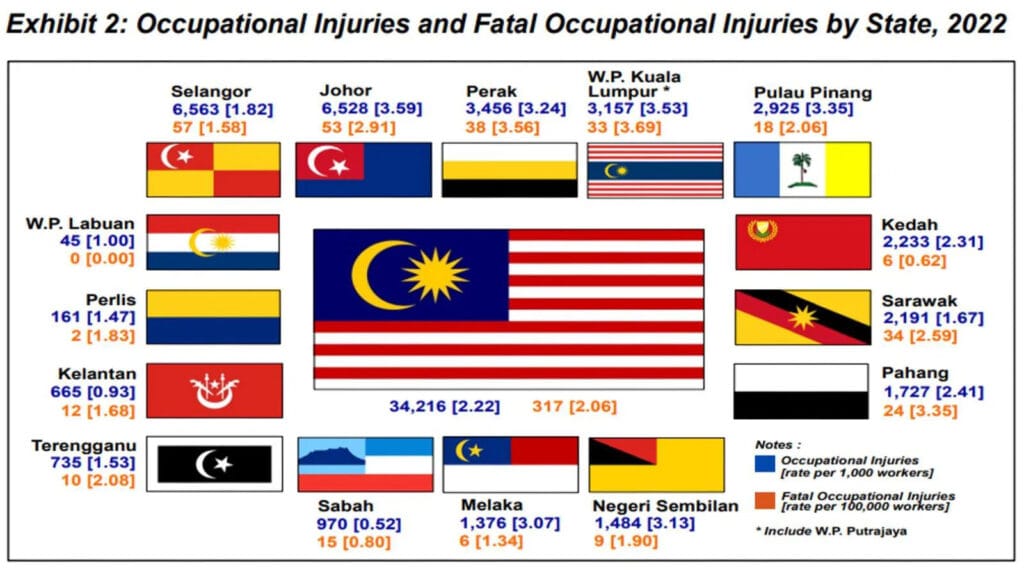Southeast Asia’s construction industry has long been known for its high rates of workplace fatalities. In many countries across the region, construction accounts for 30-40% of all work-related deaths, as reported by the International Labour Organization (ILO) in 2019. This concerning statistic underscores the need for stricter safety protocols, and recent reforms in Construction Safety Standards Southeast Asia are beginning to address these critical issues.
The Reform of Construction Safety Standards Southeast Asia
In recent years, several Southeast Asian countries have started to adopt stricter safety standards to protect workers and improve project safety. One of the most significant regional initiatives is the ASEAN Occupational Safety and Health Network (OSHNET), launched in 2015. This agreement established harmonized safety guidelines across member states. By 2020, it had contributed to a 15-20% reduction in fatal construction accidents, providing a clear indication that these reforms are effective.

Malaysia has also taken notable strides in enhancing construction safety. Through its Construction Industry Transformation Programme (CITP), launched in 2016, the country aimed to reduce workplace fatalities by 50% by 2020. By 2019, Malaysia had already achieved a 37% decrease in fatal construction accidents, showing the program’s success in improving safety measures.
Similarly, Thailand has implemented important reforms. The country’s National Master Plan for Safety, introduced in 2018, emphasizes stricter safety regulations and monitoring in the construction sector. As a result, Thailand recorded a 25% reduction in workplace accidents over the next three years, highlighting the importance of consistent government oversight in reducing hazards on construction sites.
Economic Impact of Poor Safety Standards
Beyond the human toll, poor Construction Safety Standards Southeast Asia also impose a significant economic cost on the region’s economies. According to a study by the Asian Development Bank (ADB), work-related injuries and unsafe working conditions cost the region approximately 3.94% of its GDP. This loss represents not only the direct cost of accidents, such as medical expenses and compensation for injured workers, but also the indirect costs, such as productivity loss and project delays.
Investments in Safety Measures Show Results
On a positive note, countries that have invested in improved Construction Safety Standards Southeast Asia have seen tangible results. Singapore is a leading example, where safety reforms and investments in worker training and equipment have yielded a 40% reduction in workplace injuries over the past five years, according to a 2021 report from the Workplace Safety and Health (WSH) Council. This trend reflects a broader regional shift toward prioritizing worker safety through comprehensive training, equipment upgrades, and stricter enforcement of safety protocols.
A Positive Path Forward for Construction Safety Standards Southeast Asia
The construction industry in Southeast Asia is still a challenging sector when it comes to safety. However, the positive impact of reforms in countries like Malaysia, Thailand, and Singapore shows that real progress is possible. The ASEAN OSHNET initiative continues to harmonize safety standards across the region, and individual nations are increasingly adopting stricter regulations to protect workers. As more countries invest in safety training and equipment, the industry is moving toward safer working environments, benefiting both workers and the economy.
The Construction Safety Standards Southeast Asia are evolving, and recent reforms have already led to significant improvements. The reduction in fatal accidents, combined with the economic gains from safer working environments, points to a brighter future for the construction industry. Nevertheless, continued investment in safety measures and stricter enforcement of regulations are essential to ensure that all workers can operate in secure environments. The ongoing collaboration between ASEAN nations will be critical to furthering these advances and ensuring long-term improvements in construction safety standards.

